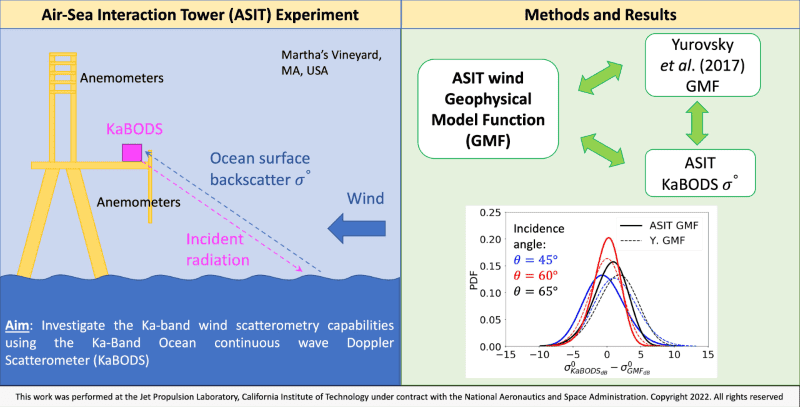A Ka-band wind geophysical model function using doppler scatterometer measurements from the air-sea interaction tower experiment

Image provided by J. Thomas Farrar
One of the main ways that winds over the ocean can be monitored globally is by use of satellite scatterometry. A scatterometer is a radar that sends a radar pulse to the sea surface at an oblique angle and measures the “backscatter,” or the amount of radar energy that comes back to the radar. The radio waves are reflected back to the radar by small ocean waves that are similar in wavelength to the radio waves and different types of radars have wavelengths of centimeters to meters. These small ocean waves tend to be in equilibrium with the wind (meaning the wave heights for these waves vary with wind speed). In order to interpret the wind speed measurements from satellite scatterometers, scientists and engineers need to “calibrate” the radar backscatter levels to different wind speeds. In preparation for a proposal to NASA to launch a scatterometer satellite operating in a new frequency range (“Ka-band”), we conducted an experiment at the WHOI Air-Sea Interaction Tower by mounting a Ka-band radar, anemometers, and other instruments on the tower to estimate this relationship over a range of wind conditions.
